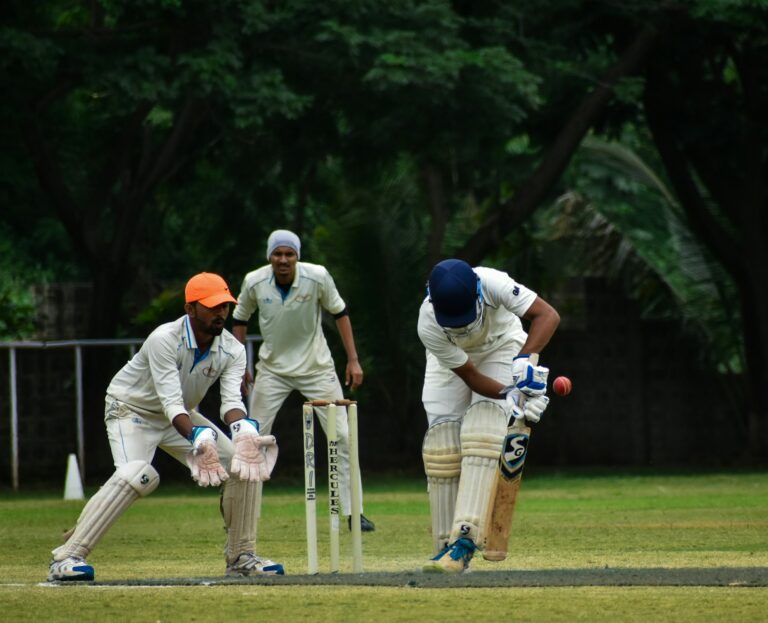The Science of Cricket Pitches
Cricket pitches are the central element of any cricket match, serving as the battleground where bowlers and batsmen test their skills. These pitches are generally rectangular in shape, with a hard and level surface that plays a crucial role in determining the outcome of the game.
The quality of a cricket pitch is influenced by various factors such as soil composition, grass length, and environmental conditions. Pitch preparation requires meticulous attention to detail to ensure a fair playing field for both teams.
The Role of Soil Composition in Pitch Preparation
Understanding the importance of soil composition in pitch preparation is crucial for maintaining a high-quality playing surface in cricket. The type of soil used can impact factors such as ball bounce, spin, and pace, ultimately influencing the game’s outcome. Different soil compositions, such as clay, loam, and sandy soils, each have their own unique characteristics that can affect how the ball interacts with the pitch.
Moreover, the soil composition plays a significant role in how well the pitch drains water. Proper drainage is essential to prevent waterlogging, which can lead to uneven playing conditions and potentially disrupt the game. By carefully selecting and preparing the soil composition, groundsmen can create pitches that offer a balance between being firm enough to support footwork yet soft enough to provide grip for bowlers.
The Impact of Grass Length on Pitch Performance
Maintaining the appropriate grass length on a cricket pitch is crucial for ensuring optimal playing conditions. The length of the grass can impact various aspects of the game, such as ball movement, bounce, and spin. When the grass is kept shorter, it allows for a faster ball speed, making it favorable for fast bowlers as the ball can skid off the pitch more quickly.
Conversely, longer grass can slow down the ball speed and provide more grip for spin bowlers, enhancing their ability to extract turn from the pitch. The grass length can also affect the behavior of the ball after pitching, with shorter grass leading to more consistent bounce and predictable movement. Groundsmen carefully monitor and adjust the grass length to create a surface that offers a balance between favoring both batsmen and bowlers, ultimately contributing to the overall fairness and competitiveness of the game.
• Shorter grass allows for faster ball speed
• Favorable for fast bowlers as the ball can skid off the pitch quickly
• Longer grass slows down ball speed and provides more grip for spin bowlers
• Enhances spin bowlers’ ability to extract turn from the pitch
• Shorter grass leads to more consistent bounce and predictable movement
Groundsmen play a crucial role in ensuring that the grass length on a cricket pitch is maintained at an optimal level. By carefully monitoring and adjusting the grass length, they are able to create playing conditions that strike a balance between favoring both batsmen and bowlers. This balance is essential for promoting fairness and competitiveness in the game, as it ensures that neither batting nor bowling side has an undue advantage due to pitch conditions.
• Groundsmen monitor and adjust grass length to create balanced playing conditions
• Balance between favoring batsmen and bowlers promotes fairness in the game
How does grass length affect pitch performance in cricket?
Grass length on a cricket pitch can have a significant impact on the way the ball behaves. Shorter grass can provide more pace and bounce, while longer grass can slow the ball down and offer more assistance to spin bowlers.
What is the ideal grass length for a cricket pitch?
The ideal grass length for a cricket pitch can vary depending on the desired playing conditions. Typically, a length of around 4-6mm is considered optimal for most pitches.
How does soil composition play a role in pitch preparation?
Soil composition is crucial in determining how well a pitch will hold up during a game. The right balance of clay, silt, and sand can help create a pitch that provides a fair contest between bat and ball.
Can grass length be adjusted during a game to affect pitch performance?
Yes, groundsmen have the ability to adjust the grass length during a game to alter the conditions on the pitch. This can be done to create a more balanced contest between the teams.
Are there any regulations regarding grass length on cricket pitches?
The ICC has guidelines on the maintenance of cricket pitches, including recommendations on grass length. However, individual cricket boards may have their own specific regulations in place.







